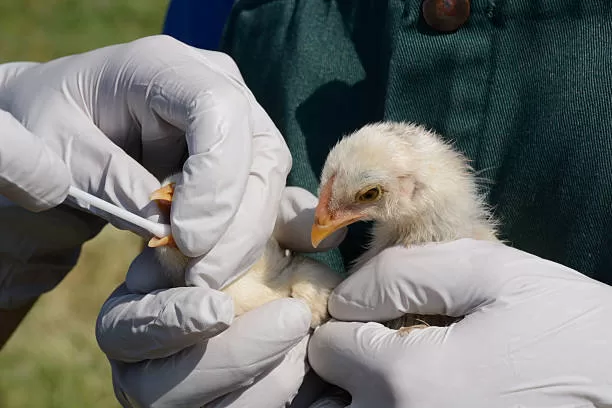Given this situation, concern among the population is growing about the possibility that this virus ends up infecting humans and cause an epidemic that seriously affects the population.
According to the Centers for Disease Control and Prevention (CDC), the spectrum of illness caused by human infections with current H5N1 avian influenza viruses is unknown. However, The severity of all avian influenza virus infections in humans has ranged from asymptomatic or mild cases to severe cases resulting in death.
Some common symptoms can be fever, cough, sore throat and muscle aches, eye infections, pneumonia and severe respiratory illnesses, as well as other serious and fatal complications.
People can acquire bird flu mainly through direct contact with infected animals (live or dead) or their contaminated environments. Transmission of the virus to people occurs when the secretions or droppings of infected birds are inhaled or the virus enters the mouth, nose, or eyes.
In addition, wild waterfowl are an important reservoir of influenza A viruses, and poultry populations can become infected through contact with wild birds.
So far no sustained person-to-person human transmission caused by avian influenza viruses has been reported. A(H5N8), A(H5N2), or A(H5N1) Neither in Latin America, nor worldwide. In 19 years, from 2003 to 2022, only 868 cases of avian influenza in humans were reported worldwide.
In Colombia, the INS convened a technical table to integrate efforts between public institutions, universities and scientific societies, to contribute within the framework of “one health” to the surveillance and monitoring actions of Avian Influenza AH5N1.
The institution assured that it maintains surveillance of respiratory viruses in workers in the poultry or swine sector and, as already mentioned, until mid-January, the country ruled out the circulation of AH5N1 through laboratory surveillance with the analysis of 174 samples by the INS.
Similarly, the INS also carries out special monitoring and surveillance of cases in health workers and travelers who come from places with a history of high circulation or a very high probability of exposure to risk.
The general director, Giovanny Rubiano García, assured before this panorama that “there is no need to be alarmed, but prepare. The idea of the technical table is, through the articulation of different experts and technicians, to strengthen the preparation against avian influenza”.
HEALTH WRITING

